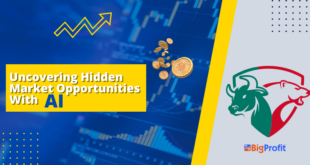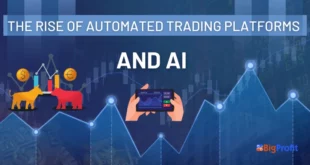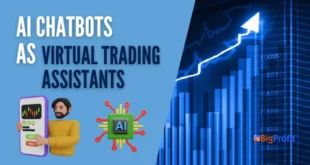Trading teams can use artificial intelligence (AI) to automate tasks, improve performance, and achieve greater ROI. But they should keep certain considerations in mind before undertaking such initiatives.
AI systems can analyze large datasets that humans cannot, identifying patterns that could lead to profitable trades and eliminating emotional decision-making that can potentially disrupt investments.
Real-time data analysis
Real-time data analysis can be an effective solution for businesses that must make quick decisions quickly. It allows organizations to reduce costs and improve productivity by understanding trends and risks within their processes. Furthermore, real-time analysis helps companies learn more about employees, customers and financial health.
Real-time data analysis has become a crucial element of industry, from information technology and transportation, finance and advertising, to real estate and real estate advertising. Real-time analytics can reveal patterns in customer behavior that help sales, marketing and advertising efforts succeed more successfully.
Trading AI, using big data to generate trading signals, is one example of real-time data analytics. It can help automate and improve trading decisions such as stop losses or profit margin adjustments automatically; automating portfolio rebalancing processes; for instance Holly automatically tests multiple algorithms each night until one with the highest odds of winning trades emerges as the winner for tomorrow.
Predictive analytics
Utilizing mined data and historical figures, predictive analytics enables organizations to look into the future with greater insight and understand potential outcomes and repercussions of decisions. Once considered exclusively the realm of mathematicians and statisticians, interactive software platforms now make predictive modeling much more accessible to more people.
Predictive analytics involves creating mathematical models to capture key trends within a dataset, then using these models to predict decision outcomes based on those models. They may also be used to recommend actionable steps for optimal results – for instance an online retailer might use predictive analytics to suggest offering customers free return shipping when they make purchases.
Neural networks and machine learning have quickly become the go-to solutions in predictive analytics, providing businesses with tools for uncovering complex relationships in datasets that cannot be explained with linear models alone. Furthermore, these patterns-matching algorithms help uncover relationships that cannot be modelled using linear methods – as well as helping validate performance of predictive models created with this technology. These tools have quickly democratized predictive analytics by making it accessible even to smaller enterprises.
Automated trading
Automated trading refers to computer software programs that automatically enter and exit trades while tracking market prices and other information, enabling traders to make profits with minimal manual input. While automated systems offer greater profits without manual intervention, regular monitoring must still occur to ensure optimal functioning.
Automating your trading strategy can be an excellent way to remove emotion from trading decisions and help you achieve greater results, but should not be seen as an alternative way of conducting analyses yourself.
Many traders choose to code their own trading strategies and custom indicators, but this can be challenging without being fluent in your platform’s programming language. Therefore, it is crucial that you find a reliable programmer at a fair cost that can create an EA specifically for you.
Portfolio management
IBM’s Deep Blue computer’s defeat of Garry Kasparov at chess in 1997 marked the birth of artificial intelligence. Since then, this technology has advanced so much that it now thinks strategically and outwits humans in various fields such as trading and investment.
Portfolio management involves selecting, prioritising and controlling projects within an organization to maximize strategic benefits or operational efficiencies. This approach allows organisations to complete projects or changes within a reasonable budget and timeline while mitigating risks.
AI-powered platforms are now available to assist traders in selecting the optimal stocks and making informed trading decisions. AI algorithms can analyze large datasets and predict patterns with greater reliability than human advisors, providing more reliable stock trading signals based on fundamental and technical analysis, sentiment and market dynamics – although no machine can fully comprehend market volatility or anticipate sudden shifts within an economy.
 BigProfit Profit through Algo & Technical Trading
BigProfit Profit through Algo & Technical Trading




